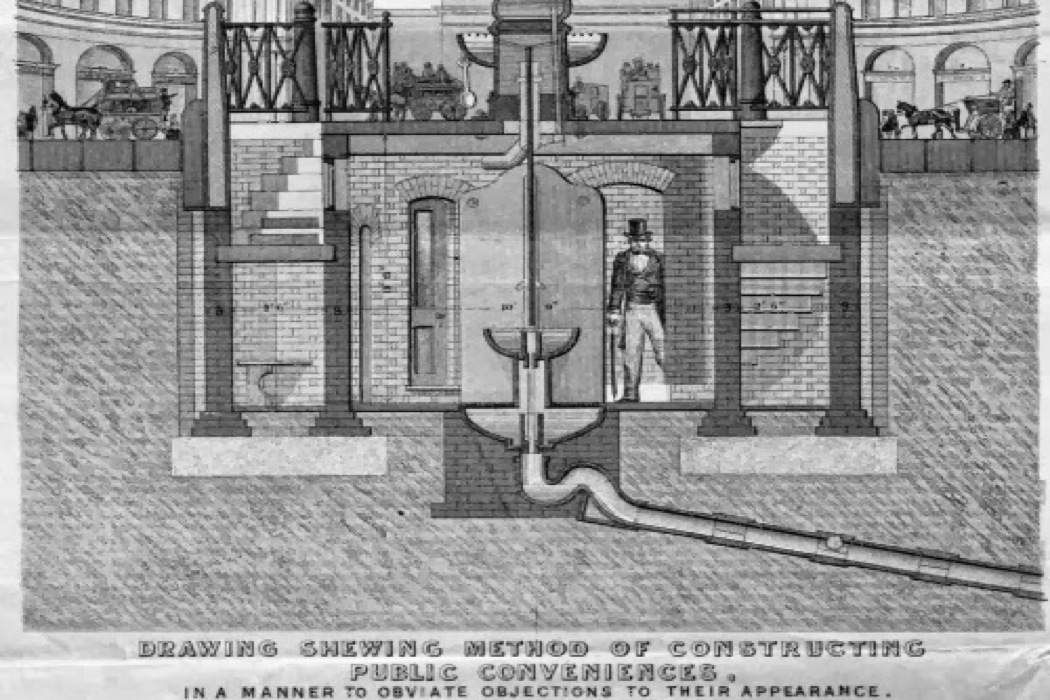ON THIS DAY: 1 May 1851 – The first public flushing toilets, known as ‘Monkey Closets,’ were unveiled at the Great Exhibition at the Crystal Palace in Hyde Park in London. Designed by sanitary engineer and plumber Josiah George Jennings, they caused great excitement. For the cost of one penny, visitors were provided with a clean seat, towel, a comb, and even a shoe shine. This is where the euphemism for going to the toilet – ‘to spend a penny’ – originated. Urinals, however, were free.
It is a common misconception that Thomas Crapper invented the flushing toilet. In reality, Crapper was a Victorian plumber known for patenting the U-bend and the floating ballcock, and for installing hand basins alongside toilets. He was only 14 years old in 1851. The first flushing toilet design is credited to Thomas Brightfield in 1449. Later, in 1596, Elizabethan courtier Sir John Harington built one for his godmother, Queen Elizabeth I, in his home near Bath. However, it did not gain popularity at the time, as it was considered an unnecessary expense.
Josiah George Jennings was born in the New Forest, Hampshire, England, in 1810. He first apprenticed with his grandfather’s glass and lead merchandising business and later with his uncle’s plumbing business. Thanks to a small inheritance, Jennings was able to establish his own business in Lambeth. With public health becoming an increasing concern in Britain, Jennings became an active participant in the sanitation revolution. He won an award for his Indian rubber tube taps, essential in his designs, which was presented by Prince Albert, an admirer of Jennings’s work.
Jennings’s ‘Monkey Closets’ were installed in the Retiring Rooms of the Crystal Palace. They were the first of their kind, and more than 800,000 people paid a penny to use them—earning Jennings a total of £2,441. Although these public toilets were a huge success, they were set to be closed when the Exhibition ended in October 1851 and moved to its new location in Sydenham, southeast London. However, Jennings persuaded the organisers to keep the ‘Monkey Closets’ open at the new site, where they continued to earn over £1,000 per year.
The flushing toilets at the Crystal Palace were so successful that, in 1854, Isambard Kingdom Brunel and the Secretary of War, Sidney Herbert, contacted Jennings to construct sanitary arrangements for British hospitals during the Crimean War.
Throughout his life, Jennings continued to patent sanitary innovations, including tip-up wash basins, drainage pipes, and twin basin water closets. He participated in international trade fairs and exhibitions, overseeing the installation of sanitary facilities at the Paris Exhibitions of 1867 and 1875, the Vienna Exhibition of 1873, and the Centennial Exhibition of 1876 in Philadelphia.
On 13 April 1882, Jennings was thrown from his gig when his carriage collided with another vehicle, breaking his collarbone. He died four days later of bronchitis. His sons continued the family business, which operated until 1967.
According to Business Research Insights, the global flush toilet market in 2024 was valued at approximately 22 billion US dollars—not bad for a few ‘Monkey Closets.’

